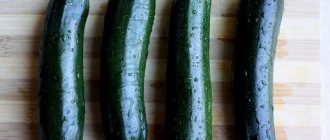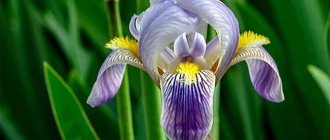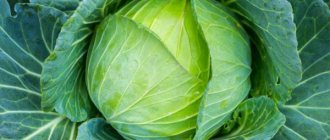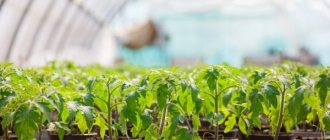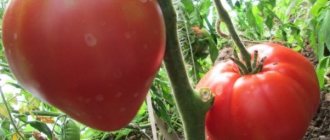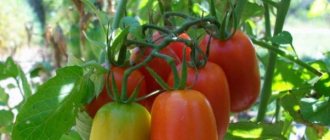Description of zebra zucchini
The zucchini variety Zebra is a member of the zucchini family. Early ripeness is determined by the minimum number of days from the appearance of the first shoots to the receipt of fully ripened material and is 35–40 days. The zebra is compact in size. The bush is weakly branched and does not require much space or light to grow. The main shoot is short. The foliage is green in color, medium to large in size, slightly dissected in shape. The type of flowering on the bush is female; male flowers are quite rare.
The main advantage of Zebra zucchini is its productivity. The average fruiting rate is 15 kg of fruits per bush. Today, the Zebra variety occupies a leading position in terms of productivity.
Another equally important advantage of zucchini is its cold resistance. The crop can be safely grown in northern regions where summers are cold and short.
Vegetables are self-pollinating plants. But in cases of poor pollination, it is necessary to spray the flowers with sweet water to attract bees. In greenhouses it is worth carrying out artificial pollination. To do this, pollen from male flowers is transferred to female flowers using cotton wool.
Attention! Zebra zucchini is bred by seed or by seedlings, depending on the climatic characteristics of the growing area.
Description of fruits
The fruit has a regular cylindrical shape. The surface is smooth, slightly ribbed with a small seed nest. The length of the zucchini is 15–20 cm. The skin is thin but dense. Thanks to this, it tolerates transportation well. Even long trips are not scary for Zebra zucchini - they will withstand export shipments.
The pulp is juicy, white with a yellowish tint. Its taste is slightly sweet. From the photo you can see that the name Zebra zucchini was not given in vain. The fruits are colored with dark green and light green longitudinal stripes, and uneven spotting is also present.
As a rule, zucchini is picked unripe, weighing about 500–600 g. But the weight of a biologically ripe fruit is 0.8–1.2 kg. Zebra produces the first harvest within 40–45 days after sowing the seeds.
Growing zucchini with seeds and seedlings
There are two ways to grow zucchini: sowing seeds directly into the ground in a permanent place and sowing seeds for seedlings. The plant is a heat-loving crop, so the timing of sowing and planting seedlings in the OG is different in each region, but more on that later.
When sowing seeds in open ground, it is necessary to prepare the seed material. To do this, seeds are lightly germinated on gauze or cotton wool. You can do without this and sow them directly into the ground. However, it is best to germinate. This method gives the summer resident confidence that all the sown seeds will sprout. Read also the article: → “Five ways to grow zucchini.”
When growing seedlings, you need to prepare deep containers; 0.5 liter cups are best. The seeds are sown into the ground to a depth of 1.5-2 cm. After five days, shoots appear. As soon as the first true leaf blooms, the seedlings can be transferred to a permanent place in the ground.
Growing zucchini can be either seedlings or non-seedlings.
When sowing seeds in beds, it is necessary to distribute them correctly. For sowing, prepare holes 2-3 cm deep; 2 unsprouted or 1 sprouted seeds are placed in each hole. To increase productivity and to protect the plant from diseases, it is necessary to change the planting location of zucchini annually.
Tip #1. When choosing a new planting site, you should take into account the characteristics of the plant: they love sunny places, without drafts.
Characteristics of the variety
Zebra zucchini is rich in minerals and vitamins. It contains:
- vitamins of group PP, C, A;
- folic acid;
- natural sugars;
- a large amount of liquid.
Thanks to its rich composition, zucchini is able to remove toxins and harmful substances from the body, reduce the risk of cancer, and have a diuretic effect. The good digestibility of the vegetable prevents the occurrence of diseases of the gastrointestinal tract. Zebra zucchini is optimal for diabetic, dietary and baby food.
Productivity
The total yield indicators, subject to all required agrotechnical measures, are about 10–12 kg per 1 sq. m. From one bush you can collect up to 30 zucchini per season.
Despite the small size of the bushes, it is necessary to maintain the distance between plants for full development. The norm for planting density is 70x70 cm. With this placement, the bush will be freely blown with air and illuminated by the sun. As the distance between crops decreases, fruiting decreases accordingly. In greenhouse conditions, while saving space, vegetable crops are planted according to a 40x50cm pattern.
Attention! Zebra squash is grown mainly in the Central Black Earth region. The variety is not popular in the rest of the country, despite its original color.
Area of application of fruits
The pulp of Zebra squash has a delicate structure, and zucchini is also valued for its good taste characteristics. In cooking they are used to make pancakes, caviar, and jam. Vegetables are grilled and prepared into side dishes and stuffed dishes. This is an indispensable product for lovers of healthy eating.
Zucchini is also a raw material for the canning industry. There are no categorical contraindications for eating Zebra zucchini.
Resistance to diseases and pests
The Zebra variety tolerates sudden temperature changes and cold snaps well. But it is not immune to fungal diseases. The main problems that harm zucchini are powdery mildew, downy mildew, anthracnose, and gray mold.
Signs of infectious diseases on zucchini:
- the presence of round spots on the leaves;
- the appearance of a white coating;
- black dots on leaf blades, flowers, stems;
- white spots with a gray coating;
- burned areas, with a gradual increase in the affected area.
If such symptoms appear in seedlings, they must be removed. Adult bushes are treated according to the instructions with Bordeaux mixture, colloidal sulfur, and systemic fungicides.
Aphids and spider mites can cause diseases in zucchini. They feed on the sap of the plant - as a result, the development of the bush noticeably deteriorates. If measures are not taken in time, the vegetable crop may die. The most effective way to combat pests is to treat the shoots with Aktelik, Fitoverm, and Fufanon. If the Zebra zucchini is slightly damaged, you can use folk remedies.
Attention! To avoid negative consequences, preventive measures should be taken. Alternate crops when planting, collect dry leaves in a timely manner, destroy affected parts of the bush, and ventilate greenhouses.
Advantages and disadvantages of the variety
Zebra zucchini has a number of advantages over other zucchini:
- high percentage of fruiting;
- early ripeness;
- cold resistance;
- compactness of the bush;
- possibility of cultivation in closed and open ground;
- storage duration;
- versatility;
- low calorie;
- transportability.
The disadvantage of this variety of zucchini is its low resistance to diseases.
Diseases and pests
Zebra zucchini are quite resistant to low temperatures, but they are not protected from various diseases. Most often, the plant is damaged by powdery mildew, gray rot and anthracnose. Such problems can be recognized by spots and holes on the leaves. But they can also damage the fruits themselves: infection appears in the form of a gray or white coating. If these symptoms were noticed on seedlings, they will have to be destroyed. If the disease has spread to a large bush, it must be treated with colloidal sulfur or Bordeaux mixture.
Anthracnose
The bush may suddenly stop growing due to insects. Most often, aphids or spider mites can be seen on zucchini, drinking the juice from the plant. As soon as bugs are noticed on the back of the leaves or stem, the vegetable must be treated. The insecticides Aktelik, Fitoverm and Fufanon are suitable for this.
In order not to lose the entire Zebra harvest, it is necessary to inspect the plants frequently. Particular care should be taken to check the lower part of the leaves, stems and the side of the fruit that touches the ground. Yellowed and damaged elements of the bush must be removed. Also, do not forget about preventive measures: change the place for planting a certain vegetable every year and do not pour too much water.
Features of planting and care
No special conditions are required when growing Zebra zucchini. But in order to achieve rapid growth and abundant fruiting, judging by the reviews of gardeners, Zebra zucchini must be properly cultivated.
- Zucchini of this variety is grown in open or closed ground.
- Various climatic features force you to pay attention to the time and method of planting. In the Urals and Siberia, it is recommended to plant Zebra zucchini in the form of seedlings or in greenhouses. In the Moscow region, sowing should be done after the end of spring frosts. In the southern regions, planting in open ground begins at the end of April.
- Vegetables are planted on black soil and sandy loam soils, moderately fertilized. If the soil is poor, then it should be fertilized with any organic fertilizers in the fall.
- The predecessors of zucchini on the site should be potatoes, onions, cabbage, beets, and annual herbs.
- Abundant watering is needed at the time of flowering and formation of ovaries. Moisten the plant about once a week with warm water.
- It is important to avoid getting moisture on the leaves.
- A week before harvesting the first harvest, you should stop watering - this will make Zebra squash more tasty.
- After moistening, it is necessary to loosen the soil and remove weeds.
- It is advisable to carry out water procedures in the morning and evening.
For greenhouse zucchini, a high level of air humidity should be maintained. Important! Abundant watering provokes excessive accumulation of moisture in vegetables, thereby reducing shelf life. - Zebra zucchini requires feeding twice a season. The first feeding is when the plant has 4-5 leaves, the second is during flowering.
- Zucchini responds well to mullein infusions, bird droppings, wood ash solutions, compost, and superphosphate.
- If there are a lot of leaves on the zucchini bush and they interfere with pollination, then they should be removed. This will ensure that bees have access to the flowers. Yellow foliage is also removed.
- The most suitable temperature for growing Zebra zucchini is considered to be +22–24°C.
- It is recommended to harvest every 2-3 days.
Features of growing zucchini
Zucchini squash is a little more demanding than regular squash. For their cultivation it is necessary to select the following areas:
- well lit or with diffused sunlight;
- with loose sandy loam soil, which has a normal acidity level (such soils are preferable for all pumpkin soils).
Soil preparation and planting
When preparing the soil and planting, the following important agrotechnical points should be taken into account:
- It is better to start preparing the soil for zucchini in the fall by digging up the area planned for spring planting with the addition of organic (rotted manure) and mineral (superphosphate) fertilizers. If necessary, wood ash is added to reduce the acidity of the soil;
- Zucchini squash is usually planted after its predecessors, the best of which are legumes, nightshades (primarily tomatoes) and cabbage. Planting after pumpkin plants is not recommended to avoid various diseases;
- before planting, the soil is dug up again, additional fertilizers can be applied and the soil can be disinfected (ammonium nitrate and potassium permanganate solution, respectively);
- zucchini seeds are planted directly into the ground, even in central Russia. Existing varieties have enough time to ripen. Planting takes place in mid-May. It is possible to plant film coverings in closed conditions;
The process of planting seeds is as follows:
- a hole is dug in which a small amount of soil, wood ash and humus are mixed;
- pre-treated hatched seeds (two or three) are placed in the prepared hole. After germination, weak shoots are removed, leaving only one, the strongest and most developed. This is necessary because the vegetable needs sufficient space;
- for the same reason, the next hole is made at a distance of at least 0.5 m;
- seed planting depth – approximately 7 cm, in heavy and dense soils – 4 cm;
- After leveling the soil, mulching is performed.
In the case of using the seedling method, 25-30-day-old seedlings are used for planting. In this case, cups are used to protect the roots as much as possible for optimal rooting of sprouts. In this case, planting is carried out at the end of May - the first ten days of June;
Most gardeners prefer to plant zucchini squash in high beds, which allows them to receive more heat and speeds up the development process.
Caring for zucchini squash
Despite the fact that zucchini is more demanding on growing conditions than ordinary zucchini, caring for them is quite simple and not burdensome.
It mainly consists of weeding, slight loosening of the soil and watering of the plant, which is carried out primarily during flowering and during fruit formation.
Also at this time, it is quite possible to fertilize with a small amount of liquid mineral fertilizers (phosphorus-potassium), and a little earlier - before flowering - add liquid mullein. This is not a mandatory step, but will slightly increase the yield of the vegetable.
One of the ways to grow pumpkin crops, in particular zucchini, is shown in the video:
Collection and storage of fruits
There are several stages of maturity of the fruits of the vegetable in question.
If consumed fresh, the fruits are picked approximately when they reach a weight of no more than 0.5 kg at the stage of “milk” maturity. The next stage - technical maturity - occurs when the fruits are ripe, but the seeds are not fully ripened. In this case, zucchini is suitable for culinary processing, as well as further storage.
If you need to get seeds, the fruit must be fully ripe. This usually happens when the vines turn yellow and the stem dries out.
